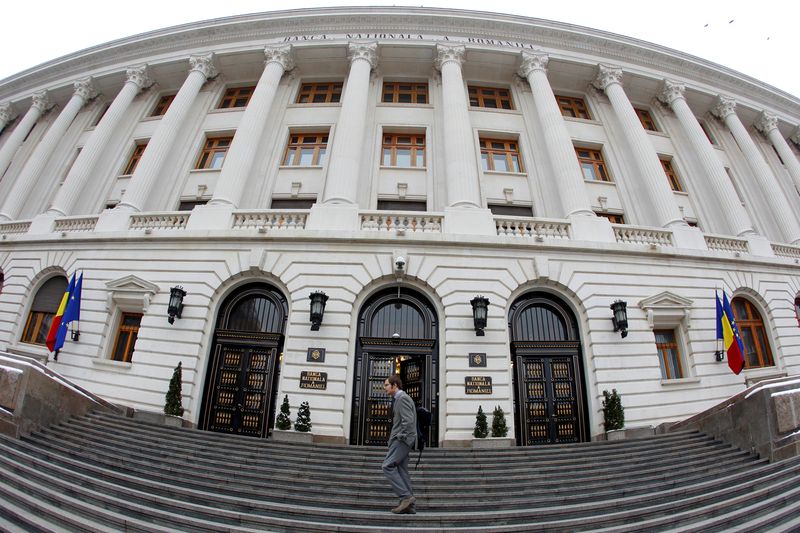BUCHAREST (Reuters) -Romania’s central bank has raised its inflation forecast for this year, citing higher energy prices that it cannot control, its quarterly inflation report showed on Friday.
The bank now expects annual inflation to reach 9.6% in December, driven primarily by energy, a big jump from the 5.9% it had forecast in November.
Inflation rose to 8.19% at the end of 2021, its highest level in a decade, despite government energy subsidies and price caps for household clients in place from November through March.
The bank expects inflation to surge to 11.2% in the second quarter of this year after the energy support scheme ends, and remain in double digits throughout the third quarter.
It was unclear whether the coalition government would extend support past March, heightening uncertainty, the bank said.
Other risks to the outlook included commodity price developments, the Russian military build-up on Ukraine’s border, and domestic fiscal consolidation efforts, as well as persistent bottlenecks in production and supply chains, the bank said.
Policymakers expect inflation to ease to 3.2% at the end of next year, the central bank’s first forecast for 2023, returning to within the 1.5%-3.5% target band one quarter later than previously envisioned. The bank must tread a narrow path to curb inflation without fuelling a growing current account deficit.
On Wednesday, the bank raised its benchmark interest rate by a bigger-than-expected half percentage point to 2.50%.
That rate remains the lowest among regional peers, which have tightened borrowing costs aggressively to rein in inflation fuelled by external factors like energy as well as domestic issues such as post-pandemic demand and tight labour markets.
(Reporting by Luiza Ilie; Editing by Catherine Evans)

























